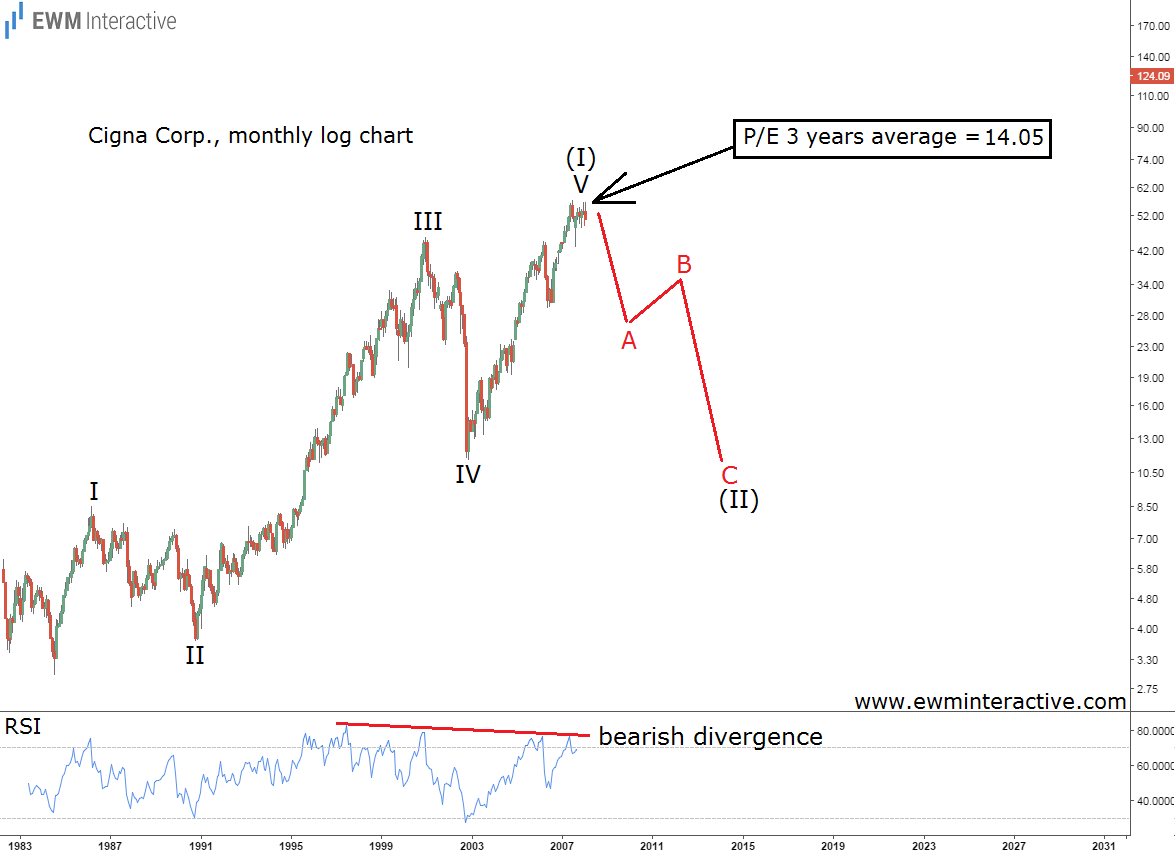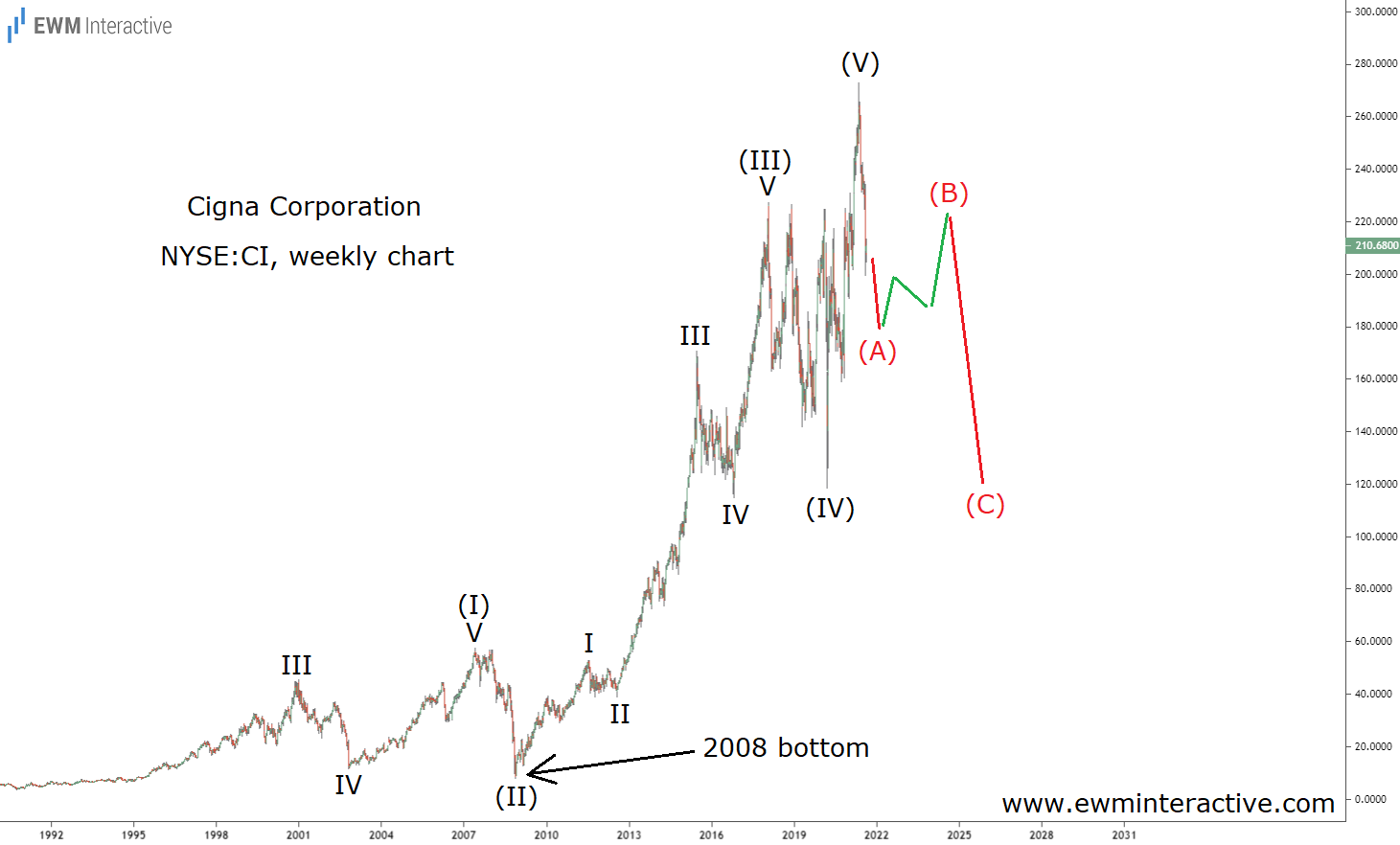In a case study article on Cigna (NYSE:CI), published in October, 2016, we examined how a fundamentally sound and undervalued stock can still drop nearly 90%. The reason for that crash didn’t lie in some company-specific issue, rather, it happened to occur during the biggest financial crisis in 80 years.
Nevertheless, we made the point that there was a complete impulse pattern on Cigna's weekly logarithmic chart. According to the Elliott Wave theory, a correction follows every impulse. This is how one could’ve anticipated the huge plunge in this otherwise strong and undervalued business.

Above is the chart we based our claim on. The impulse pattern, labeled I-II-III-IV-V, was so clear that any newbie could recognize it. At the 2007 top, Cigna was trading at a three-year trailing P/E ratio of just 14. The company was financially sound, profitable and growing. By any fundamental measure, the stock was a strong buy below $60 a share.
Cigna Sent An Elliott Wave Warning In 2007
The only reason not to invest in Cigna in 2007 was the bearish Elliott Wave setup its weekly chart revealed. Corrections usually erase the entire fifth wave. The anticipated retracement in CI’s case was likely to drag the price down to the support of wave IV near $11. “At that price the stock would be ridiculously cheap, trading at just 3 times earnings”, the bulls would say. Yet, this is exactly what happened.

Wave (II) caused a selloff to just $8 a share, or just over 2 times the company’s 2007 earnings. Cigna was, indeed, ridiculously undervalued in late-2008. That undervaluation, paired with the Elliott Wave rule that once a correction is over, the prior trend resumes, made CI a wonder to behold over the next 13 years.
In May, 2021, the stock climbed to an all-time high of almost $273 a share. In the meantime, the company earned $23 a share in 2020, and is expected to earn over $20 a share in 2021. At $273, Cigna was just as undervalued as it was in 2007, with a 2021 P/E of 13.6.
History Rhyming Itself Again?
Yet, the stock is down 22.7% in the past three months anyway. At its current price of less than $211, Cigna looks like a real bargain. Apart from the never-ending health regulation chatter, the company has never been in a better competitive position. Unfortunately for its shareholders, its weekly chart is once again sending a bearish message.

The updated weekly chart above reveals Cigna's phenomenal surge from the depths of the 2008 crisis. It also shows that an even bigger five-wave impulse has been formed. The 2008 bottom is still marked as the end of wave (II). The following surge to $227.13 in January, 2018, must then be wave (III). Wave (IV), culminating in the coronavirus panic in 2020, dragged Cigna to sub-$120. The rally to $273 by May, 2021, is logically labeled as wave (V).
13 years have passed, Cigna is a bigger and stronger company now. And while the Elliott Wave impulse on its chart is also bigger, it is still the same pattern. The consequences for investors should be similar, as well. A decline to the support of wave (IV) can be expected. From the current price of $211, this translates into a 43% decline to roughly $120.
It looks like the weakness from $273 might be just the start. And if you think that at $120 Cigna would be ridiculously cheap at just 6 times earnings, we agree. That doesn’t make it less likely to happen, though.
